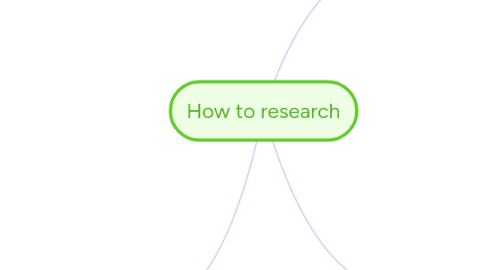
1. How to Read
1.1. Caveat: no single style works for everyone!
1.2. Klein’s basic steps for skimming, scanning, processing…
1.2.1. Read the abstract (if provided)
1.2.2. Read the introduction.
1.2.3. Read the conclusion.
1.2.4. Skim the middle, looking at section titles, tables, figures, etc.—try to get a feel for the style and flow of the article.
1.2.4.1. Is it methodological, conceptual, theoretical (verbal or mathematical), empirical, or something else?
1.2.4.2. Is it primarily a survey, a novel theoretical contribution, an empirical application of an existing theory or technique, a critique, or something else?
1.2.5. Go back and read the whole thing quickly, skipping equations, most figures and tables.
1.2.6. Go back and read the whole thing carefully, focusing on the sections or areas that seem most important.
1.3. Once you’ve grasped the basic argument the author is trying to make, critique it!
1.3.1. Ask if the argument makes sense. Is it internally consistent? Well supported by argument or evidence? (This skill takes some experience to develop!)
1.3.2. Compare the article to others you’ve read on the same or a closely related subject. (If this is the first paper you’ve read in a particular subject area, find some more and skim them. Introductions and conclusions are key.) Compare and contrast. Are the arguments consistent, contradictory, orthogonal?
1.3.3. Use Google Scholar, the Social Sciences Citation Index, publisher web pages, and other resources to find articles that cite the article you’re reading. See what they say about it. See if it’s mentioned on blogs, groups, etc.
1.3.4. Check out a reference work, e.g. a survey article from the Journal of Economic Literature, a Handbook or Encyclopedia article, or a similar source, to see how this article fits in the broader context of its subject area.
2. How to Write
2.1. Basic Search
2.1.1. What’s that? The latest dance move from Brazil? No. It just means using AND, OR, or NOT in your searches. Your research will go much faster if you can use a Boolean operator. So, let your fingers do the dancing by using AND, OR, or NOT to improve your search results.
2.2. Begin Research
2.2.1. Do you have an assignment to write a research paper but you’re not sure where to start? Take a deep breath and begin by carefully reading the assignment requirements. This will help you understand the work you need to do.
2.3. Find Books
2.3.1. Now that you have a topic, where can you find the information you need?
2.4. Find Articles
2.4.1. Whether you need a scholarly article or an article from a newspaper or popular magazine, the University of California libraries have hundreds of databases in all different subject areas to help you.
2.5. Advanced Search
2.5.1. Are you having trouble finding relevant articles with your keyword searches? Try searching by subject headings. It’s an effective way to find focused information on any topic.
3. Academic Intergrity
3.1. Make Citations
3.1.1. Your research is done and your paper is written. What else is left to do before you can turn in your assignment? You still have to document the sources that you used. How do you do this? With CITATIONS!
3.1.2. Plaigirism
3.1.2.1. What counts as plaigirism? How can it be avoided?

